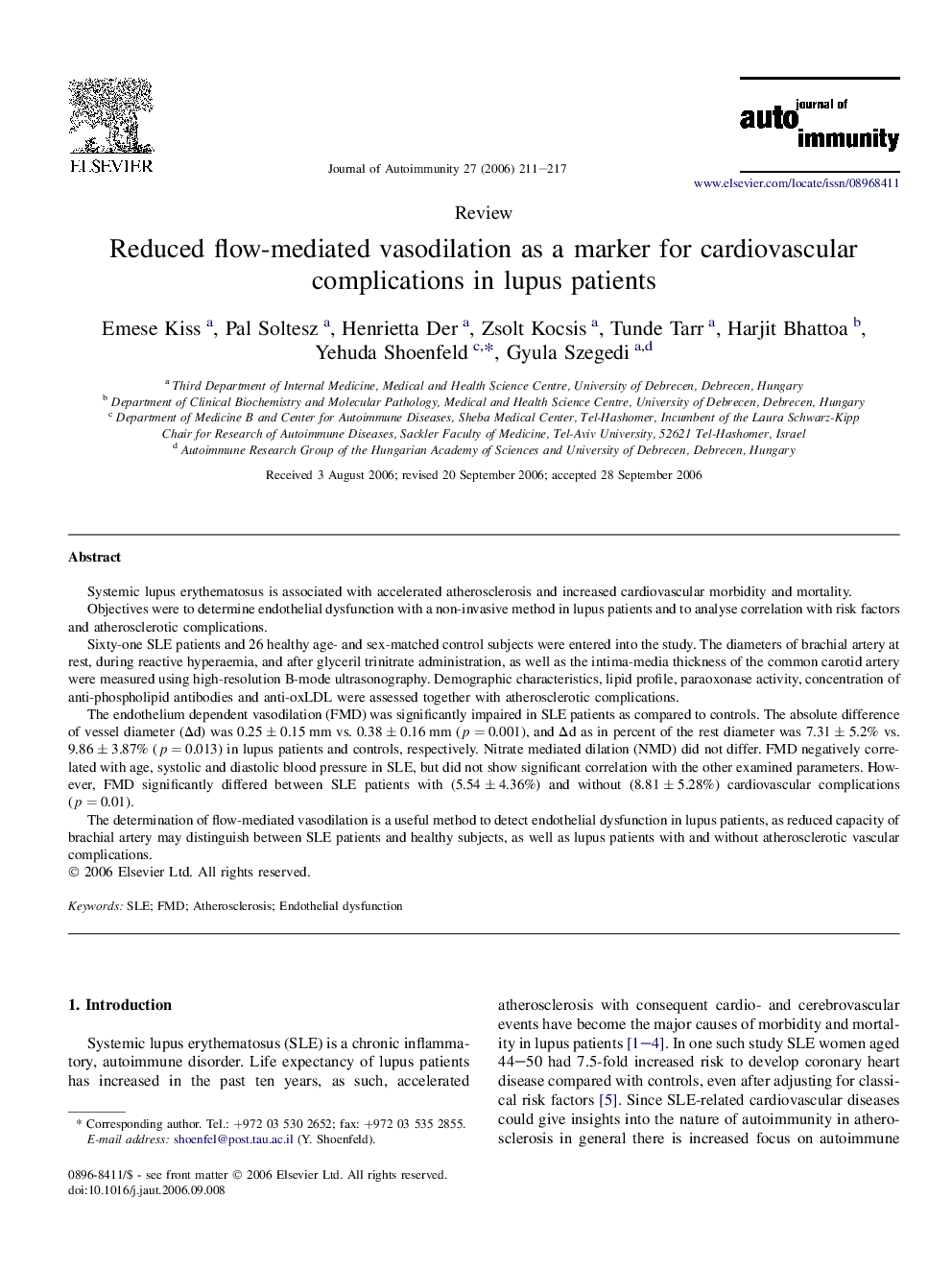| Article ID | Journal | Published Year | Pages | File Type |
|---|---|---|---|---|
| 3368475 | Journal of Autoimmunity | 2006 | 7 Pages |
Systemic lupus erythematosus is associated with accelerated atherosclerosis and increased cardiovascular morbidity and mortality.Objectives were to determine endothelial dysfunction with a non-invasive method in lupus patients and to analyse correlation with risk factors and atherosclerotic complications.Sixty-one SLE patients and 26 healthy age- and sex-matched control subjects were entered into the study. The diameters of brachial artery at rest, during reactive hyperaemia, and after glyceril trinitrate administration, as well as the intima-media thickness of the common carotid artery were measured using high-resolution B-mode ultrasonography. Demographic characteristics, lipid profile, paraoxonase activity, concentration of anti-phospholipid antibodies and anti-oxLDL were assessed together with atherosclerotic complications.The endothelium dependent vasodilation (FMD) was significantly impaired in SLE patients as compared to controls. The absolute difference of vessel diameter (Δd) was 0.25 ± 0.15 mm vs. 0.38 ± 0.16 mm (p = 0.001), and Δd as in percent of the rest diameter was 7.31 ± 5.2% vs. 9.86 ± 3.87% (p = 0.013) in lupus patients and controls, respectively. Nitrate mediated dilation (NMD) did not differ. FMD negatively correlated with age, systolic and diastolic blood pressure in SLE, but did not show significant correlation with the other examined parameters. However, FMD significantly differed between SLE patients with (5.54 ± 4.36%) and without (8.81 ± 5.28%) cardiovascular complications (p = 0.01).The determination of flow-mediated vasodilation is a useful method to detect endothelial dysfunction in lupus patients, as reduced capacity of brachial artery may distinguish between SLE patients and healthy subjects, as well as lupus patients with and without atherosclerotic vascular complications.
